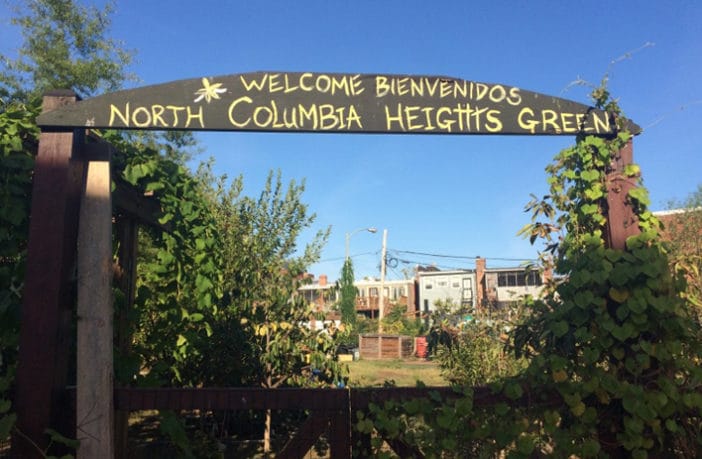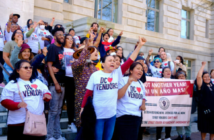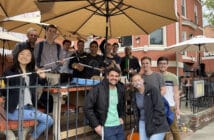Once home to dilapidated garages and serving as a hotspot for illegally dumping trash, the space now known as “Columbia Heights Green” was a goal that many thought was going to be impossible to accomplish. The first call to Washington Parks & People for help was in 2006 from locals in Columbia Heights who were done with the way things were. Chip Fawcett, the late chairman of Parks & People and a lifelong advocate for and voice of DC’s parks, saw the opportunity to transform the once disheveled spot into a lasting community “green space”.
So began the realization of the dream led by neighborhood residents, Parks & People, and many other volunteers including Ward 1 Council member Jim Graham. Determined and focused on the vision, they established a unified plan to transform this delpapadated; vacant lot into an organic community farm featuring 16 raised-bed plots, a greenhouse, butterfly gardens, berry patches, native flowering and shade trees, green job training and even a learning and gathering space. At first, the effort seemed hopeless due to more than 25 tax liens on the site, keeping it in what seemed to be a permanent state of limbo. It took special legislation by the DC Council coupled with massive legal efforts donated by a local law firm to wipe out the tax liens and at long last deliver the site into community hands. Even after community acquisition, the Green still faced entrenched illegal dumping and enforcement challenges, complex stormwater engineering requirements, and bureaucratic and permitting obstacles.
Regardless of the long process, Washington Parks & People and the Columbia Heights community were not giving up on their dream and this perseverance ultimately led to the successful opening of what is now known and loved as the Columbia Heights Green on September 11, 2010. As part of the nationwide surge in community agriculture and greening, the Green is an example for communities across the city on how to make similar green conversions of forgotten spaces. Ten years later, from that first planting, we have grown from a traditional community garden with individually managed plots to a beacon of community agriculture where volunteers farm in unity. Everything the garden produces is weighed and then split and part is divided amongst volunteers and the rest is donated to food distribution organizations in the area such as Martha’s Table. In addition to growing food, we are committed to strengthening bonds in our community through social gatherings, education and outreach, and events open to the public.
2019 was a big year for the Green. We produced over 750 pounds of organically grown food, and our partners at the University of Maryland AgroEcoLab conducted a study of our crops’ nutritional profiles in connection with dietary surveys (conducted by CHG volunteers) of our food-insecure neighbors. This information helped to develop our 2020 planting plan in order to maximize the micronutrient value of our produce. As we continue to increase food production, the Green has added a new compost system including four beds for berries along the perimeter, a pavilion and kitchen area for cleaning produce and even a covered stage for hosting local talent.
There’s a lot going on at the Green for this year to keep us evolving. We are working to complete installation of the demonstration farm kitchen, the planned 7500-watt solar array, a redone meditation bench and a program “barn.” We are excited to announce that we have also resumed beekeeping on the Green for pollination and honey! Year-round programming is also increasing as we seek to grow community together with nutrient-dense food growth and improved sustainability efforts. In the past, the Green has hosted religious service, learning and classes of large variety from elementary through college, film showings, concerts, art shows, job training and community forums. Finally, we are enhancing the Green’s role as an example and teaching site for community “mini-farms” across the city by developing more training and videos of the lessons learned in the Green’s food production journey. We want the Green to inspire people across DC to dramatically expand our urban agriculture capacity to help meet the nutrient needs of everyone facing food crises.




